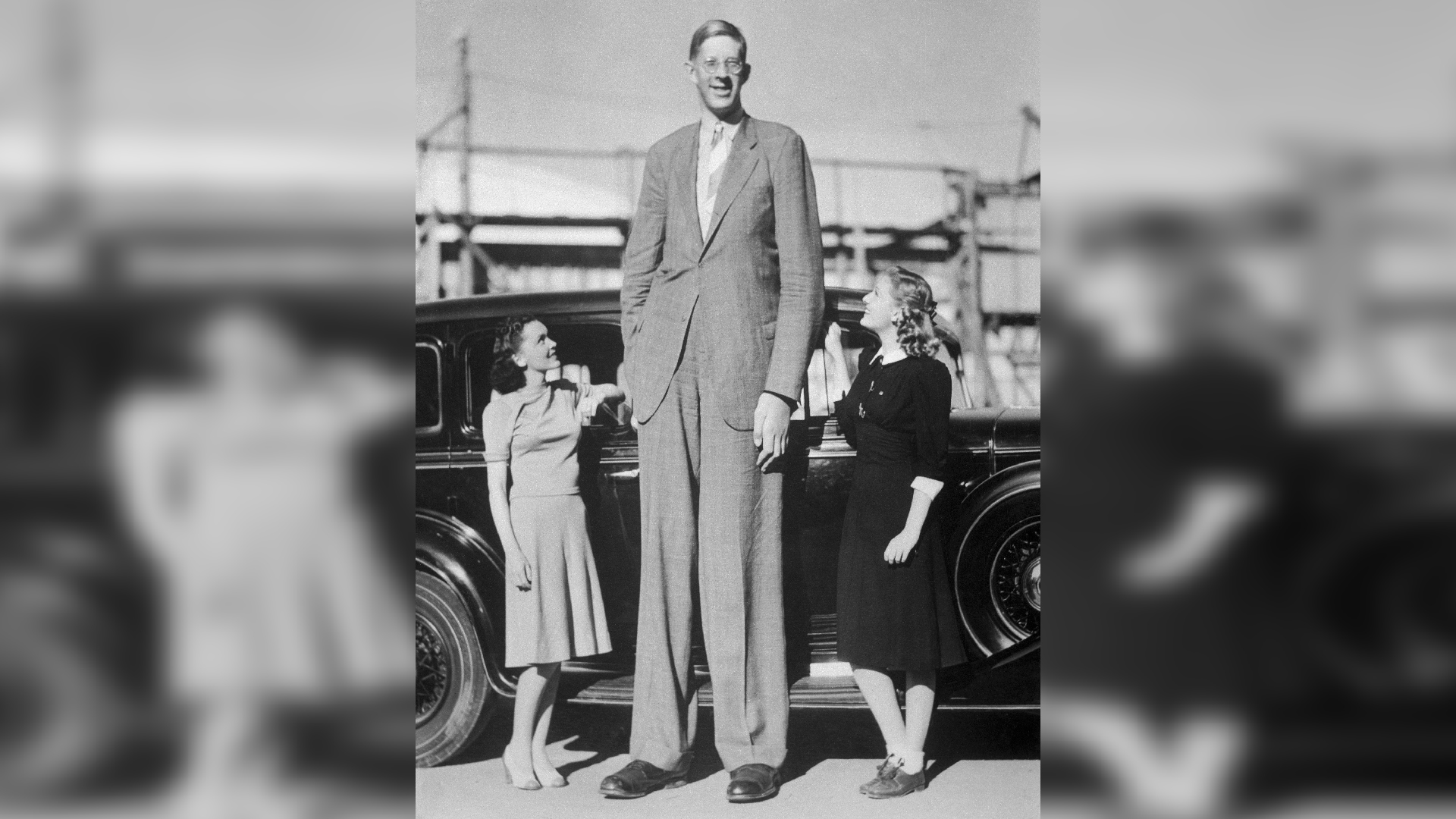
Have giant humans ever existed?
Some humans have always stood head and shoulders above their peers, but there's nothing mythological about these real-life human giants.

Humans have shared stories about giants for thousands of years, from the cyclopes of Greek mythology to the biblical Goliath. But are these just tall tales, or have giant humans really walked this Earth?
If you consider a nearly 9-foot-tall human a giant, then yes. Robert Wadlow, the tallest person on record, grew to 8 feet, 11 inches (2.72 meters) before he died at the age of 22 in 1940, according to Guinness World Records.
Wadlow was well above the current U.S. average male height of around 5 feet, 9 inches (1.75 m) and even taller than some interpretations of the biblical descriptions of Goliath. Still, there was nothing magical about Wadlow. As with most real-life giants, his stature resulted from a medical condition.
"The majority of [giant] patients have a growth hormone problem," Márta Korbonits, an endocrinology professor at Queen Mary University of London, told Live Science. "That's what Robert Wadlow had."
Korbonits noted that the leading cause of gigantism is elevated levels of a growth hormone produced by the pituitary gland in the brain. Most of the time, these high levels are caused by a benign tumor. One reason it's unlikely we'll see another person as tall as Wadlow again is that doctors can now remove the tumor and use medications to halt growth, as gigantism and the tumor endanger a person's health.
Related: Why don't we have many giant animals anymore?
Other conditions can cause people to be extraordinarily tall. These include Marfan syndrome, a genetic disorder that causes bones to grow longer, Korbonits explained.
Sign up for the Live Science daily newsletter now
Get the world’s most fascinating discoveries delivered straight to your inbox.
However, some people grow to extreme heights without a known medical condition; they include the former world's tallest man, Bao Xishun, who stands 7 feet, 9 inches (2.36 m) — a giant without gigantism. They probably have a set of genetic variants that predisposes them to tall stature, Korbonits said.
While it's easier for researchers to study giants living in modern times, extremely tall people have likely always been around. The oldest known case of gigantism comes from the alleged remains of an ancient Egyptian pharaoh, who was around 6 feet, 1.6 inches (1.87 m), while Korbonits' research has found that many real-life Irish giants inherited a gene mutation from a person who lived 2,500 years ago.
"Since humanity has been around, we've had these diseases, so there's no reason you wouldn't have had these giants in Ancient Egypt or any other time of human history," Korbonits said.
Genetics combines with environmental factors, such as diet in early life, to determine height, with populations often growing taller over time with the advancement of civilization. However, it's not always a linear trend.
Pavel Grasgruber, a researcher at Masaryk University in Brno, Czech Republic, told Live Science that some male skeletons from the late phase of the mammoth-hunting Gravettian culture, from about 29,000 years ago, stand out for their extraordinary height and even helped to inspire myths about giants. The tallest of these seven skeletons, excavated in the Grimaldi cave system in Italy around the turn of the 20th century, is estimated to have stood 6 feet, 5 inches (1.96 m).
"Consider that at the time these skeletons were found, the standard for male height in Europe was under 170 cm [5 feet, 7 inches]!" Grasgruber said in an email. "No wonder these people must have seemed like 'giants' to the scientists of the time."
Researchers don't know if the tall remains were representative of the Gravettian population. Still, Grasgruber noted that tall males were typical of the early Upper Paleolithic populations in France and the historical region of Moravia (modern-day Czech Republic), achieving heights that modern industrial nations did not reach until the mid-20th century.
"The reason for this good physical condition of early Upper Paleolithic hunters was the low population density and plenty of game in the form of mammoths and other large mammals," Grasgruber said.

Patrick Pester is the trending news writer at Live Science. His work has appeared on other science websites, such as BBC Science Focus and Scientific American. Patrick retrained as a journalist after spending his early career working in zoos and wildlife conservation. He was awarded the Master's Excellence Scholarship to study at Cardiff University where he completed a master's degree in international journalism. He also has a second master's degree in biodiversity, evolution and conservation in action from Middlesex University London. When he isn't writing news, Patrick investigates the sale of human remains.









